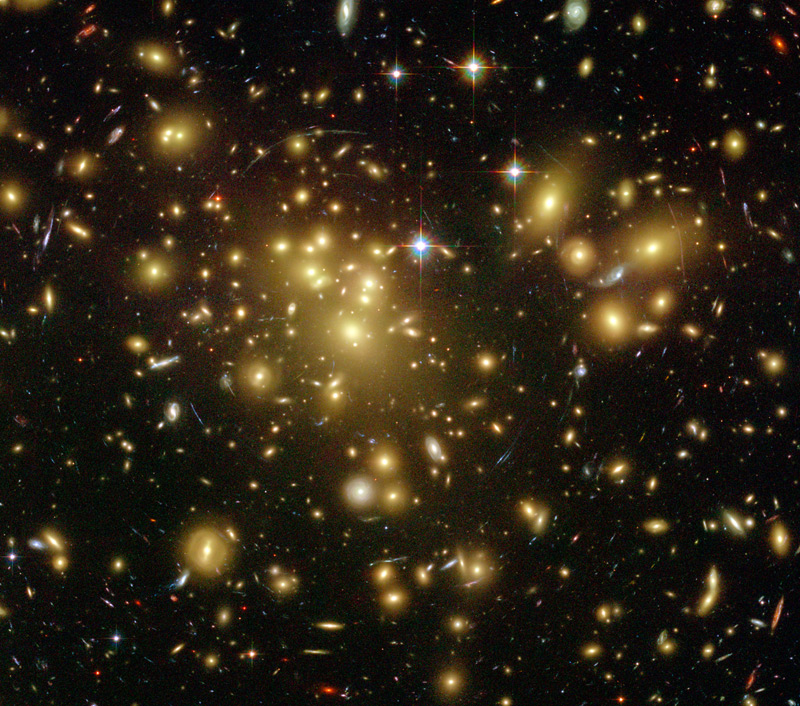1–9 billion years after the Big Bang
As Galaxies formed, they also moved around, crashing into one another. Every time galaxies collide, gas and dust are thrown together, creating maelstroms between the stars. The gas and dust are churned up and heated, with some of it forming new stars. The galaxies collected together into clusters, and the clusters into super-clusters, such as the “Abell 1689” supercluster shown on the right.
The galaxies themselves changed over time, gradually morphing from large ellipsoidal balls of stars into the beautiful spiral galaxies we see today. As the Universe has expanded, the galaxy cluster have got further apart, and galaxies have collided less. By looking at more and more distant objects, we can see galaxies as they were in the early Universe.
The galaxies and clusters all have a gravitational pull, which acts to slow the expansion of the Universe down. Recent measurements, however, indicate that the Universe is currently expanding faster than it used to, with something causing the rate of expansion to accelerate. This means that the galaxy clusters will continue to get ever further apart. The expansion is thought to be caused by a mysterious component of the Universe called “Dark Enery”. In fact, Dark Energy seems to account for nearly three quarters of all the stuff in the Universe.
| < First Galaxies | Galaxy Evolution | Solar System > |
